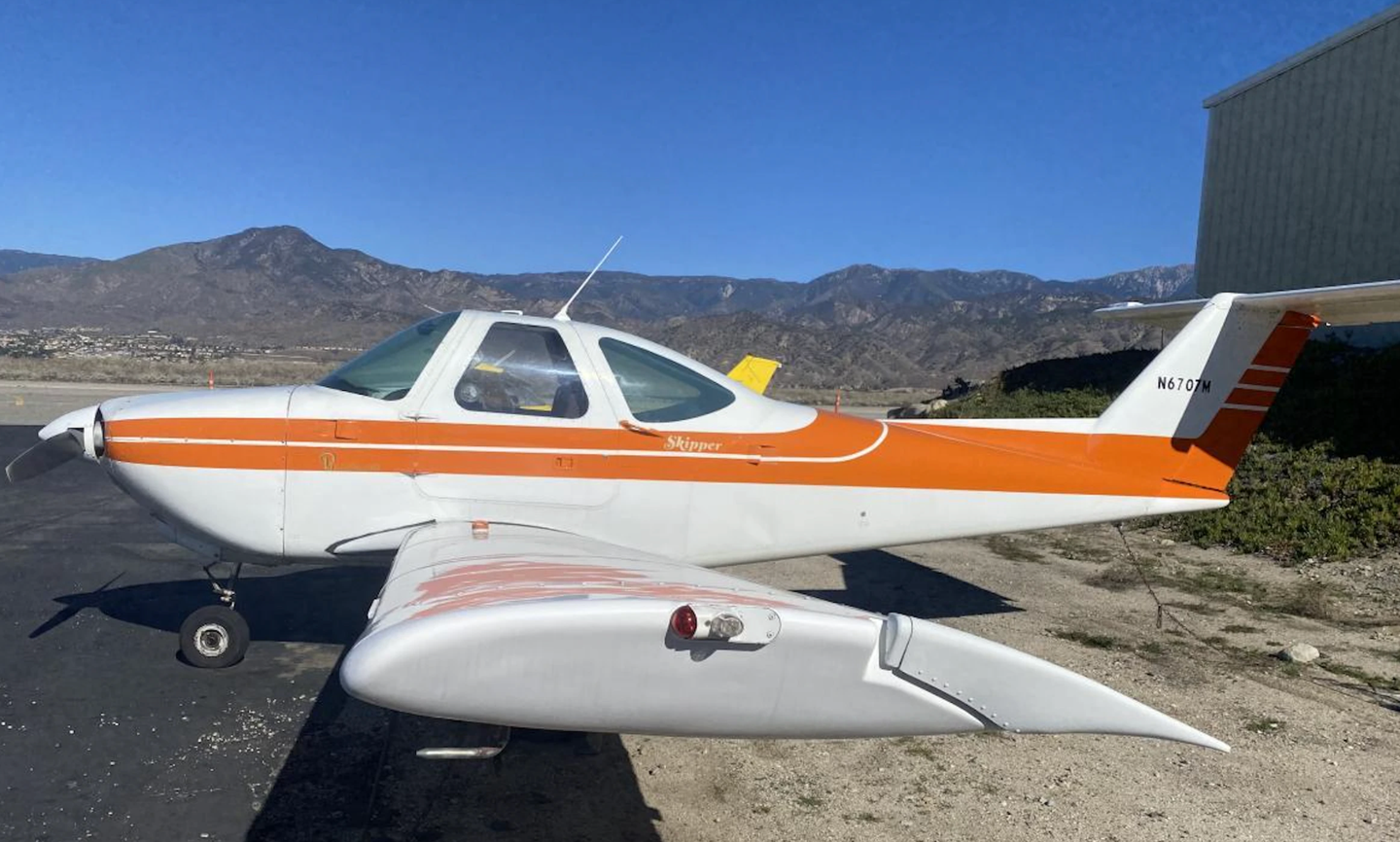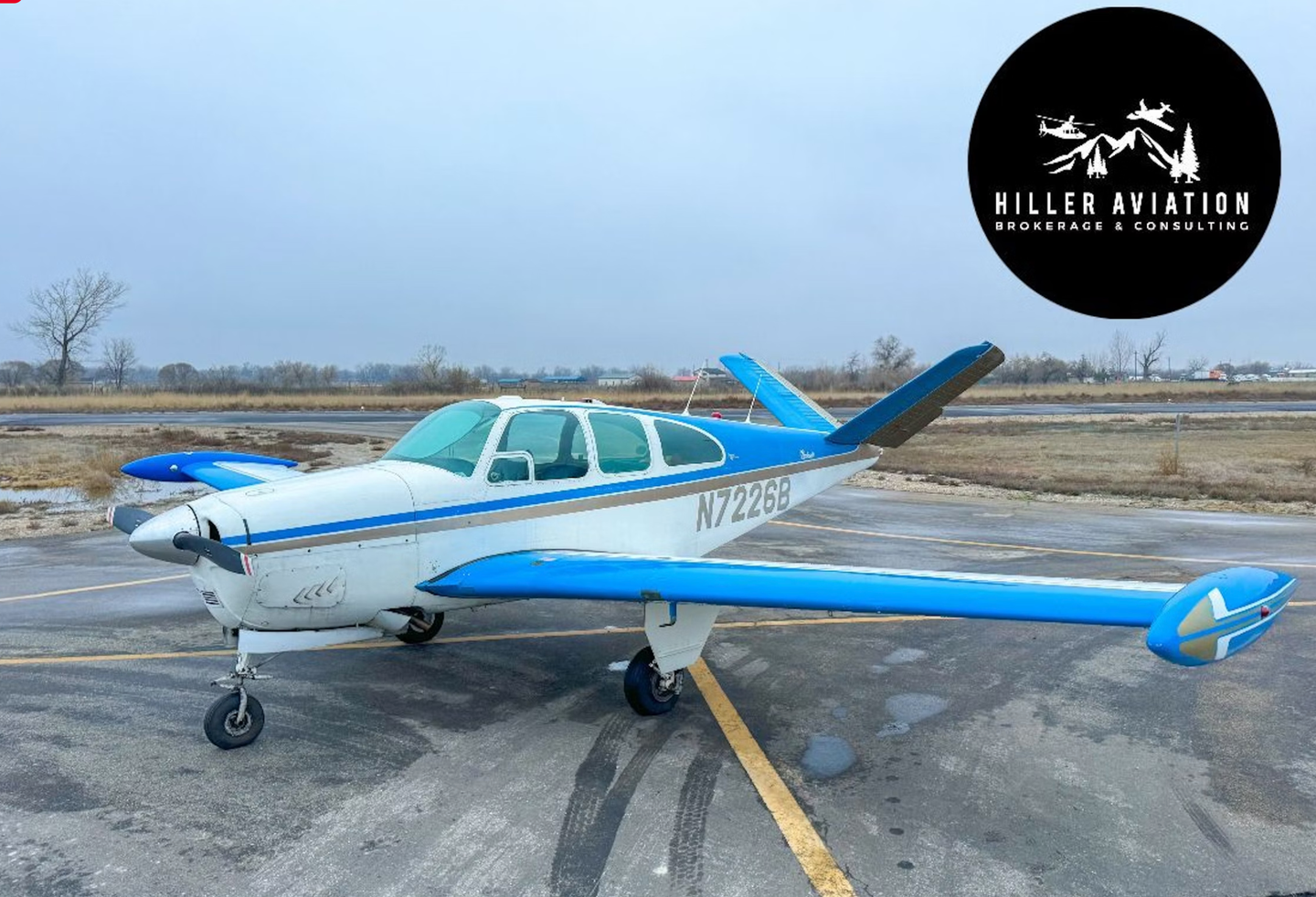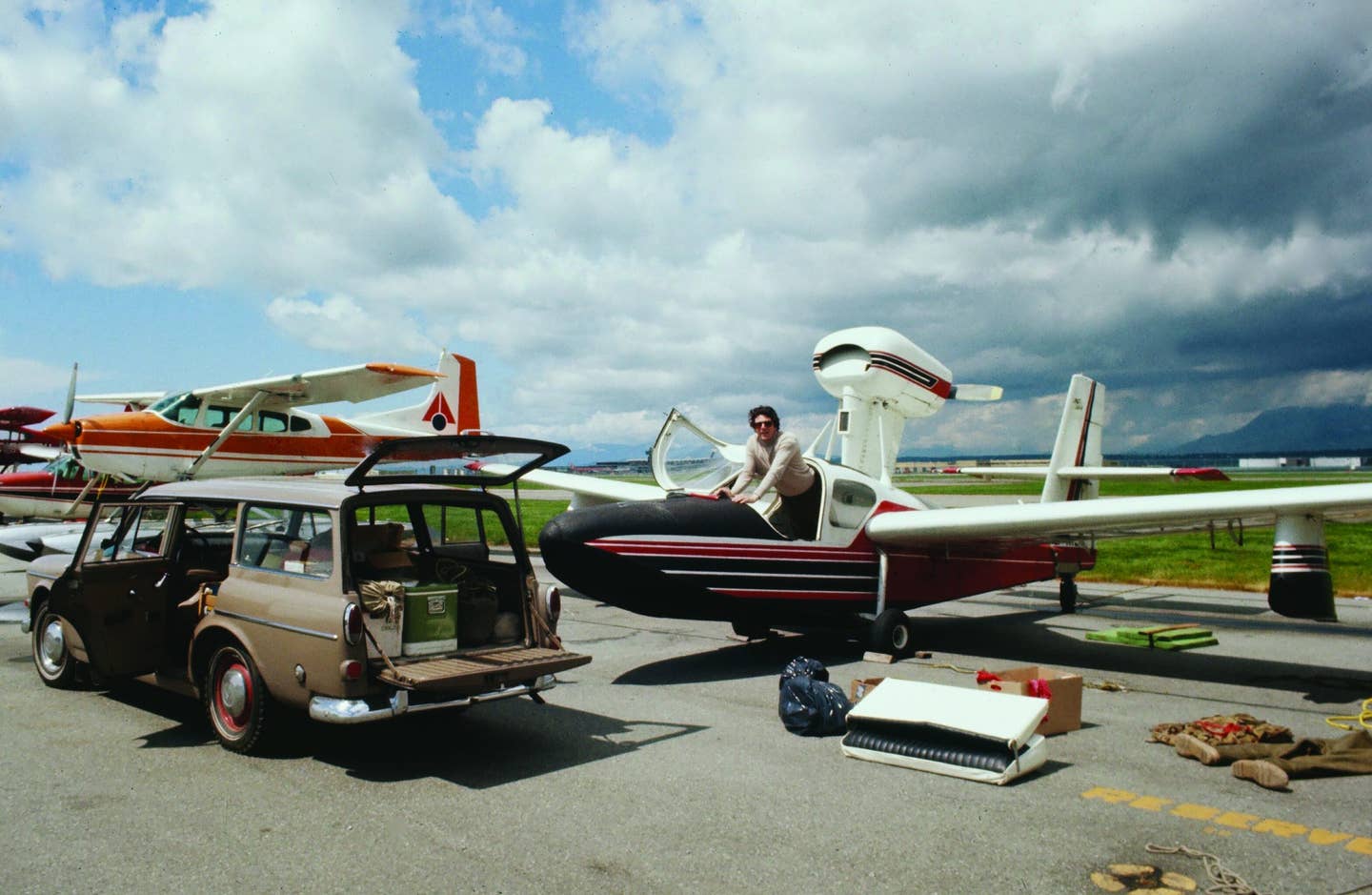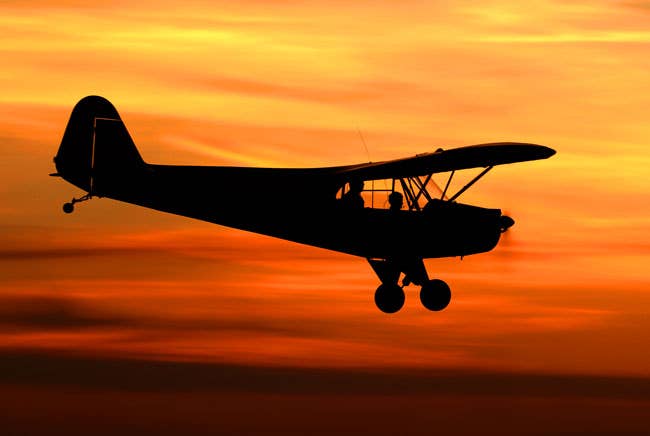There’s Something About A Bonanza
In continuous production for an amazing 66 years, the Bonanza continues to be most aviators’ dream machine
 |
It seems everyone loves the straight-tailed 36 Bonanza. To many pilots, it's the paragon of aerodynamic virtue, the standard by which all other single-engine airplanes are measured. Owner/pilots who work their way up from two-seat puddle jumper to four-seat retractable to a 36 Bonanza often consider that they've arrived. There's little reason to aspire for more or better, because they're already at the peak of the pyramid.
Beech Aircraft has done an excellent job of marketing the Bonanza as a pedestal product, alone at the top of the class. That's not true in all respects, but there's little question the model 36 represents an impressive combination of engineering, comfort, utility and performance. At least, you'd better not ask anyone in the 10,000-member-strong American Bonanza Society to name a better airplane.
And yet, what sets the Bonanza apart from other six-seat airplanes isn't that easy to define. One obvious distinction is that the model 36 is now truly alone in its class. It's the only new normally aspirated six-seat single in the sky. Piper's Mirage and Matrix, and Cessna's Stationair, are all turbocharged.
Fact is, the Bonanza turns in performance that's not far off turbocharged standards in the bottom two miles of sky, but that alone doesn't identify the G36's charismatic appeal. For those pilots who have flown a late-model Bonanza, there's a certain indefinable quality, a personality, that endears practically everyone. Beech has capitalized on that undefined appeal, as evidenced by the fact that the six-seat Bonanza recently celebrated its 4,000th sale.
 The G36 Bonanza is powered by a 300 hp Continental IO-550 engine and cruises at 174 knots. |
Introduced in 1968, the Beech 36 featured a 10-inch fuselage stretch over the four-seat E33A cabin. The longer cockpit was dedicated to a third row of seats. The first airplanes employed the same engine, a 285 hp IO-520 Continental. A few years later, Beech switched to a 300 hp Continental IO-550 powerplant, and that's the engine it flies behind today. The airplane was later produced with turbocharging, first the A36TC, followed by the updated B36TC. The latter was discontinued in 2002.
Despite the physical similarity of the old models to the new, Beech has made a long list of evolutionary changes to the airplane to keep in step with the competition. The current model is about as comparable to the original 1947 model 35 V-tail as is the Piper Mirage to the J-3 Cub.
Perhaps the most significant improvement for 2013 is the standard automatic climate control system. Some non-pilots are amazed when they learn that airplanes costing as much as 15 to 20 times the price of an automobile don't come with air-conditioning as standard equipment. That's because a representative aircraft air-conditioning system weighs in at between 50 and 80 pounds, and that has to be subtracted directly from payload, a compromise many pilots are unwilling to make since the heat only lasts for a few minutes during taxi, takeoff and climb. Installed weight is meaningless to non-aviators who drive anything from Toyotas to Jaguars, all of which offer excellent climate control and ignore system weight.
 |
The newest version of the G36 solves that problem. Beech has replumbed the Bonanza to provide your choice of outside air or cooled, compressed air---or both. Beech calls the new rheostatic unit the Bonanza automatic climate control air-conditioning/heating system. The AC feeds through overhead vents that service the entire cockpit, not just the pilot seats, and the flow can be regulated differentially in front or back.
The pilot's control head appears to be identical to the one installed on the Cessna (formerly Columbia) Corvalis series, and the unit works seamlessly and invisibly, as efficient as the climate regulator in a BMW. It's very much a set-it-and-forget-it system. You select the temperature after start, and the unit cools or heats the cabin as necessary with no further brain drain for the pilot.
You can use the system full-time---no need to shut down during takeoff or landing. A hefty, high-flow ceiling console provides a wide 21-inch air delivery vent, generating plenty of air for the pilot stations.
If heat is what you need, the G36 offers a dual zone system that allows passengers to control the cabin heat setting independently. In other words, there's no longer any reason for the pilots up front to be sweating in order to provide adequate heat to the rear.
 |
All G36 Bonanzas come standard with the Garmin G1000 glass panel with dual WAAS GPS. (That's where the "G" in the model designation came from, in case you hadn't guessed). The G1000 has become the standard of the industry in the short span of a decade and is installed on most new Beech, Cessna, Diamond, Cirrus, Mooney and Piper aircraft.
The Beech single also offers synthetic vision as standard, and you can't imagine how effective the system is at providing real-time three-dimensional spatial orientation until you use it.
Several years ago, I used a predecessor to synthetic vision to fly a totally blind approach into Vero Beach, Fla., using only the synvis screen. Conditions were perfect VFR, and I had a second pilot in the right seat, of course. I was wearing Foggles and using GPS for navigation, flying strictly by the synthetic readout. The owner helped out on the radio to lighten the workload, and I flew his Cessna T-210 from Fort Lauderdale right to the ground at Vero Beach, convinced that Sky King had nothing on me. Of course, I flared too high and dropped it in a few feet to a memorable but survivable landing. A lesson in humility.
The G36 also features Garmin's excellent integrated GFC700 autopilot with altitude/rate-of-climb preselect and built-in yaw damper. The G700 has many big airplane features, including an airspeed mode that allows you to lock in airspeed for climbs and descents if you wish. Like the G1000 system it was designed to complement, the GFC700 is fairly intuitive, but don't plan on learning all functions in one day.
 |
I've been fortunate to fly the succession of new Bonanzas pretty much every year, and I'm always a little amazed at how Beech continues to find new ways to improve the product. I flew the latest model in conjunction with the 2013 Oshkosh AirVenture, and the G36 includes innovations in a number of areas.
Interior design is one of them. Although the configuration hasn't changed, the bill of materials has been upgraded once more. The new airplane is quieter, and even more plush than last year's model, if that's possible.
That's something of a pleasant surprise in a cabin that was already one of the best in the industry. The updated interior includes new cabin seats with adjustable lumbar support, new side ledges and sidewalls, redesigned "waterfall" headrests, an improved headliner and window reveals. There's also a baggage compartment extended two feet farther aft. This allows carrying long items, such as golf clubs, without impinging on cabin space for the front four occupants. The rear section is specifically designed for quick-change capability, so you can reconfigure to two-, four- or five-seat planform in short order.
Outside the airplane, the latest Bonanza has LED lighting at all stations with more candle power and better dispatch reliability. The new lenses also provide slightly less aerodynamic drag and weigh less than the old covers.
 |
 |
When it comes to performance, you should have no reason to complain about the G36. There was a time when aircraft companies' performance claims were sometimes suspect. Not any more. Even granted that the manufacturer has the advantage of a new prop and engine, perfect rig, a CG near the aft limit, the choice to fly on only satin-smooth days using only test pilots with biorhythms on high and thousands of hours in type, the new G36 I flew for this evaluation did exactly what it was supposed to.
With three folks aboard and about a 2â3 fuel load, the big Continental IO-550B provided smooth power as we took the runway at Appleton north of Oshkosh for my demo flight, then settled into a comfortable climb at 105 knots. There were puffies starting to form in the area, but we still ascended at a solid 1,100 fpm to 7,500 feet, occasionally bouncing through light afternoon turbulence. On the way uphill, Beech sales demo pilot Pat O'Connell used the G1000's lean assist program to fine-tune the mixture for optimum climb.
With the airplane level and trimmed, I watched true airspeed gradually count up to 173 knots, almost exactly the cruise spec. Take away the bumps and optimize altitude and temperature, and the 174-knot cruise target seems more than reasonable.
Payload has always been the Achilles heel of general aviation, and the Bonanza does pay a penalty for so much luxury and sophistication. Maximum ramp weight is 3,663 pounds, and Beech's spec for empty weight is 2,630 pounds, so useful load comes in at 1,033 pounds. Subtract 444 pounds of fuel, and you're left with a full-fuel payload of 589 pounds.
As mentioned earlier, Beech wanted the Bonanza to be fully equipped right out of the box, so that payload is fairly representative of the bottom line for people and things. There are very few options to add weight. The only extras are Jeppesen ChartView, Stormscope, Honeywell DME and an altimeter calibrated in millibars for overseas operation.
 An updated interior includes new cabin seats with adjustable lumbar support, new side ledges and redesigned "waterfall" headrests. |
As with most other aircraft manufacturers, the company's battle with the scales has been never-ending, and almost unquestionably will continue to be. Five hundred eighty-eight pounds is three people plus 80 pounds of baggage, and that might seem inconsistent with a six-seat airplane. Once again, however, the G36 was never intended to fly with full fuel and full seats.
The story is very much the same with most four-seat airplanes that can only carry three with full fuel on board. The G36 makes an impressive four-seater with enough fuel for three hours plus reserve and plenty of room to stretch out and enjoy the trip.
Conversely, maximum allowable payload on the G36 is limited to 864 pounds, so there's no way you could load six 170-pounders into the G36 and fly away, no matter what your fuel load. (Never mind that the average passenger weight these days is probably well above 170 pounds.) Four adults and two kids would be about the limit. If you did fly with maximum payload, you'd need to limit fuel to 26 gallons, roughly an hour plus a small reserve at 65% power.
In fact, that may be the way most pilots will operate the G36 Bonanza. You'll only lose about six knots at 65% power, but fuel burn drops by two gph, a more than equitable trade.
The Baron and Bonanza share the same landing gear used on Beech's military, turboprop T-34C to train U.S. Naval aviators to come aboard carriers, although no T-34C has ever actually landed on a carrier. The point is that Bonanza gear is as stout as they come, and that's one reason you can take the Cadillac up the jeep trail if there's a need. I've seen a few of the airplanes flying cargo or supplies to bush strips in Alaska.
In truth, the G36 isn't suited to short strips, but the gear is adaptable to semi-rough surfaces, as long as the potholes aren't deep enough to ding the gear doors. With the quick-change interior and rugged floor structure, the G36 can accommodate more and varied types of cargo than you might imagine.
Beech sold just under 100 G36s in the last four years, so the Bonanza isn't a high-volume production model. Base price is $759,000, but remember, there are essentially no "ups" to elevate that cost. The 2013 G36 comes complete as is with easily enough performance and avionics to satisfy an Airbus captain.
Even after 66 years of production, the model 36 Bonanza isn't perfect. The cabin isn't as wide as a Mirage, and the payload isn't as generous as a Matrix. That doesn't matter. I still want one.

Subscribe to Our Newsletter
Get the latest Plane & Pilot Magazine stories delivered directly to your inbox






